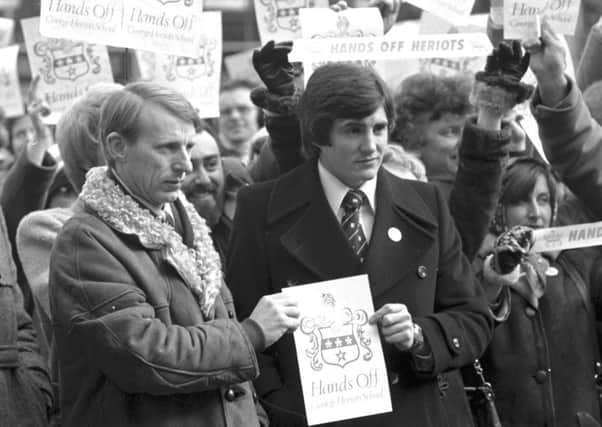Tom Peterkin: Tax hike on private schools will alienate middle class


Around quarter of a century ago, Dame Muriel Spark wrote an article for the New Yorker recalling her school days. It touched on a rather strange ritual conducted at James Gillespie High School for Girls, the Edinburgh institution that inspired her classic novel “The Prime of Miss Jean Brodie”.
Each year during the summer term, the staff would gather on a platform. The pupils then watched the teachers as they each took a pinch of snuff. The ceremony ended in much sneezing and “general hilarity”. The object of the exercise was to remember the school’s founder James Gillespie, a snuff merchant who left part of his fortune to found the school.
Advertisement
Hide AdAdvertisement
Hide Ad“This was the school that it fell to my happy lot to attend,” she wrote. “Gillespie’s endowment allowed for parents of high aspirations and slender means, like my own, to pay moderate fees in return for educational services far beyond what they were paying for.” In a nutshell, the novelist summed up the original ethos of the Scottish merchant schools, so many of which exist in one form or another to this day.
One hundred years after the birth of Dame Muriel, James Gillespie’s is now a co-educational state school.
But other institutions, which come from the same tradition and owe their existence to philanthropic benefactors, now form the backbone of the independent schools sector.
These schools include George Heriot’s (founded by the 17th century silversmith Jinglin’ Geordie), George Watson’s College (called after its 18th century merchant banker founder of the same name) and Fettes College (founded in 1870 as a result of a bequest made by the wealthy merchant William Fettes).
Today’s custodians of these schools – as well as the 70 or so other private day and boarding schools that make up Scotland’s independent sector – are casting a wary eye at the Scottish Government.
The notion that Scottish ministers have private schools in their sights was given a shot in the arm with the publication of the Barclay Review into business rates back in September.
Among the more controversial proposals were its recommendations to end rates relief enjoyed by fee-paying schools and the arms-length bodies (ALEOs) which run local authority leisure and cultural facilities.
This week Finance Secretary Derek Mackay announced the Scottish Government would not be going ahead with the proposal to penalise ALEOs. The u-turn was a victory for common sense. It was performed after ministers were lobbied hard about the devastating impact a business rates hike would have on local swimming pools, leisure centres and libraries across the country. A matter of hours before a Tory debate condemning the closure of such facilities, Mr Mackay announced he would not be taking the recommendation forward.
Advertisement
Hide AdAdvertisement
Hide AdThe Finance Secretary’s announcement made no mention of what he intended to do about the Barclay proposal to increase the business rates on private schools – an omission that simply fuelled speculation that they are to be hit with a business rates hike.
Political attacks from those who see private schools as elitist institutions that exist to serve the wealthy and the privileged are nothing new.
In the 1970s, left-wingers on the old Lothian Regional Council believed the schools had strayed far from their aim to serve parents of “slender means” and tried to turn Heriot’s and Mary Erskine into state comprehensives.
The move triggered the “Hands Off Heriot’s” campaign that saw the school’s supporters enlist the formidable counter-attacking skills of famous former pupils and Scotland rugby full-backs, Ken Scotland and Andy Irvine.
The threat facing private schools today may not involve bouncing them into the public sector, but it would create substantial challenges.
The removal of the 80 per cent business rates relief that fee-paying schools currently receive as a result of their charitable status would add hundreds of thousands of pounds to the running costs of the big day schools.
The consequence of that would be to force fees up, in some cases by several hundred pounds. Should Mr Mackay go-ahead with increasing the business rates burden faced by private schools, it will be based on a political calculation that the plaudits he receives from left-wingers will outweigh the dismay felt by private school parents.
Mr Mackay is due to announce his decision in next month’s budget – a political occasion that is almost certain to see income tax rises.
Advertisement
Hide AdAdvertisement
Hide AdDelivering a budget that combines hammering private schools with tax rises will do little to endear Mr Mackay to an increasingly squeezed Scottish middle class.
But more than that, rising fees will make private schools more elitist as they become less affordable.
The pot of money that can be spent on bursaries for children from poor backgrounds will also be reduced. With more than 29,000 Scottish children in private schools, diminution of the sector would put strain on a stretched state system.
Moving away further away from the Muriel Spark model seems a big price to pay for a measure that, according to the Barclay Review, would only raise £5 million.
